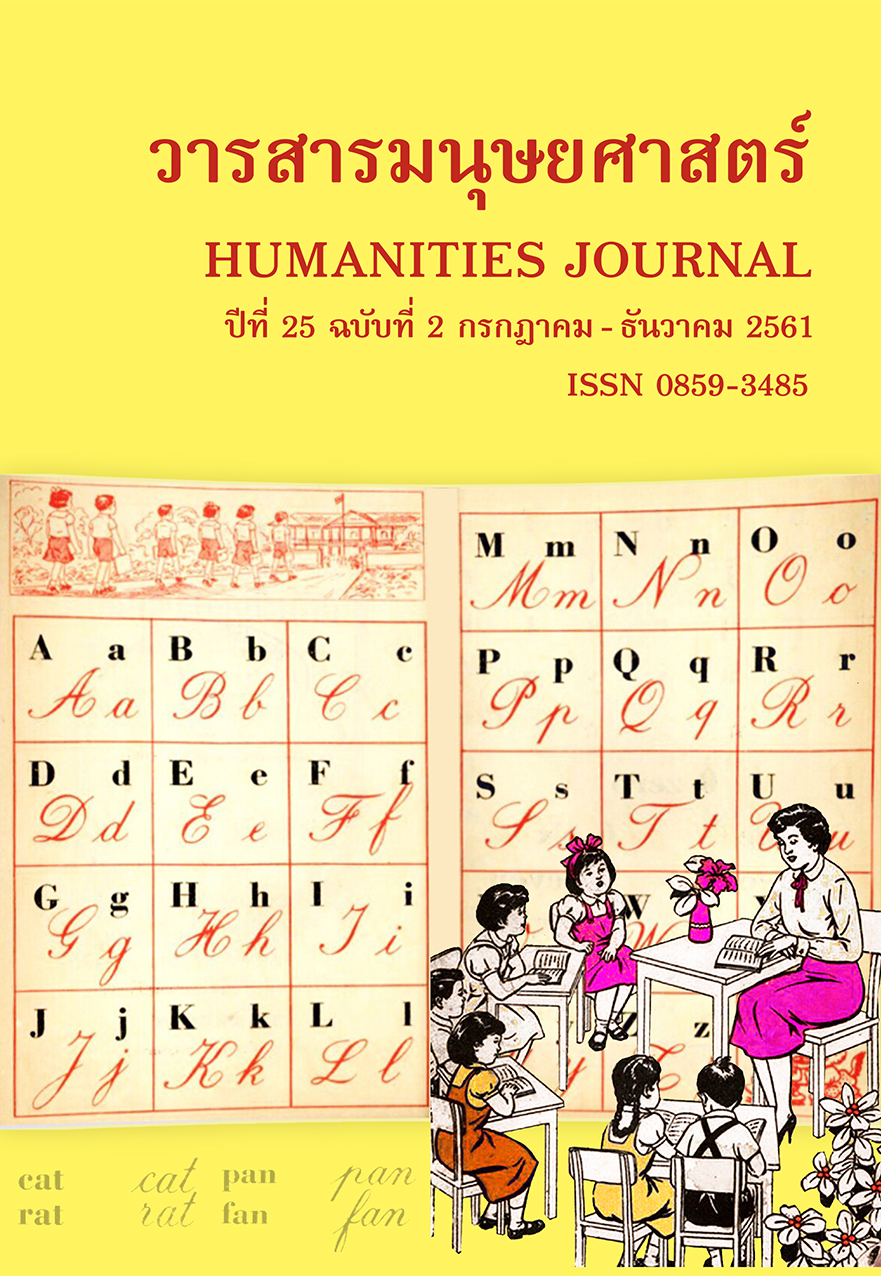กลวิธีการสื่อสารในการพูดภาษาสเปนของผู้เรียนชาวไทย
Main Article Content
Abstract
The objective of this research is to study strategies used by Thai learners in Spanish oral communication, by comparing the selection of strategies by Thai learners from different Spanish proficiency levels. Moreover, the research also aims to study the effectiveness of each type of Communication Strategies (CS) used by learners from different Spanish proficiency levels and with different frequency of use. The sample group consists of 8 students from Spanish major, Faculty of Arts, Chulalongkorn University. The main instruments of this research are a self-assessment questionnaire concerning the Frequency in Using CS and recorded conversations between each learner of the sample group and a Spanish native speaker with a duration about 10 minutes per learner. After transcribing the conversations, the researcher analyzes the data and summarizes the results.
The results reveal that Thai students use Achievement Strategies for solving the speaking problems the most at 85.12%. To specify, the most common strategy used is mumbling at 57.17%, followed by self-repair at 9.62%. The proficiency level shows no effect on the selection of CS. However, the learners with a higher level of Spanish tend to select strategies which involve the use of the target language, and meanwhile lower-level learners often use strategies related to their mother tongue language or another second language. The finding also indicates that higher-level learners have a higher percentage of the effective use of CS, which coincides with results from other investigations. Considering the frequency of use, the results reveal that learners from A1-A2 levels with a high frequency in using CS show higher percentage of effective use of CS than those from the same proficiency level but with a low frequency of use. However, in case of learners from B1-B2 levels the frequency is not a factor which affects the communication effectiveness. The results also point out that self-repair has the highest percentage of effectiveness at 100% and code switching has the lowest percentage at 30%.
Article Details
References
Anderson, S. (2012). Differential gains in oral proficiency during study abroad: the role of language learning aptitudes. Georgetown University.
Bacon, S. M. (1992). The relationship between gender, comprehension, processing strategies, and cognitive and affective response in foreign language listening. The modern language Journal, 76(2), 160-178.
Bialystok, E., & Frohlich, M. (1980). Oral communication strategies for lexical difficulties. Interlanguage Studies Bulletin, 5, 3-30.
Brown, H. (1994). Principles of language learning and teaching. New York: Pearson Education.
Corder, S. P. (1981). Error analysis and interlanguage. Oxford University Press.
Corder, S. P. (1983). Strategies in interlanguage communication. London: Longman.
Dornyei, Z. (1995). On the teachability of communication strategies. TESOL Quarterly, 29, 55-85.
Dörnyei, Z., & Scott, M. L. (1995). Communication Stragegies: An Empirical Analysis With Retrospection. Deseret Language and Linguistic Society Symposium, 21(1), 137-150.
Færch, C., & Kasper, G. (1983). Strategies in interlanguage communication. London: Longman.
Huang, C. P. (2010). Exploring factors affecting the use of oral communication strategies. LongHua Technology University Journal, 30, 85-104.
Littlewood, W. (1984). Foreign and second language learning: Language acquisition research and its implications for the classroom. London: Cambridge University Press.
Nakatani, Y. (2006). Developing an oral communication strategy inventory. Modern Language Journal, 90, 152-167.
Paribakht, T. (1985). Strategic competence and language proficiency. Applied Linguistics, 6, 132-146.
Prebianca, G. (2009). Communication strategies and proficiency levels in L2 speech production: A systematic relationship. Revista de estudios de Linguagem, 17, 7-50.
Safont Jordá, M. (2001). An analysis on the use and selection of communication strategies by Catalan/ Castilian learners of English. Rassegna Italiana di Linguistica Applicata, 1, 57-72 .
Tarone, E. (1977). Conscious communication strategies in interlanguage: A progress report. TESOL 77, 194-203.
Yoshida-Morise, Y. (1998). The use of communication strategies in language proficiency interviews. Talking and testing: Discourse approaches to the assessment of oral proficiency. 205-238.
García Nuñez, W. (2006). El uso de las estrategias de comunicación oral y el nivel de dominio del idioma inglés. Revista Perfiles, 27, 97-123.


